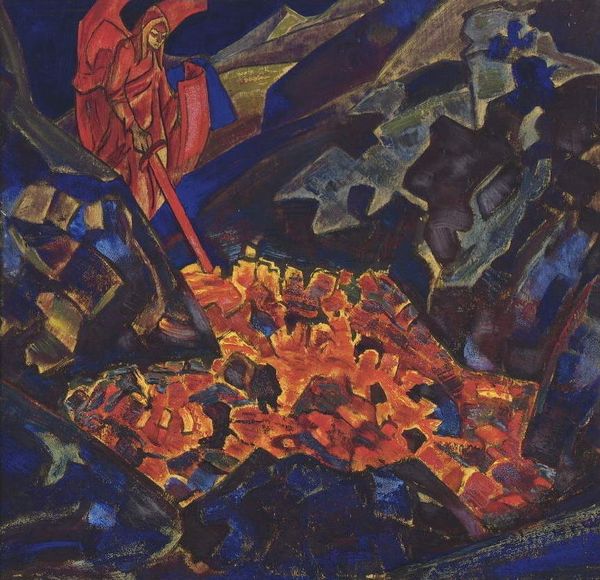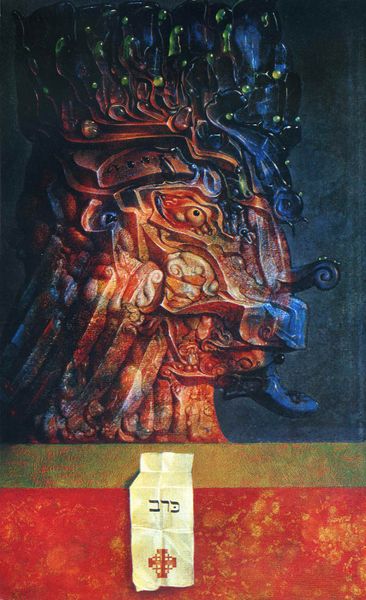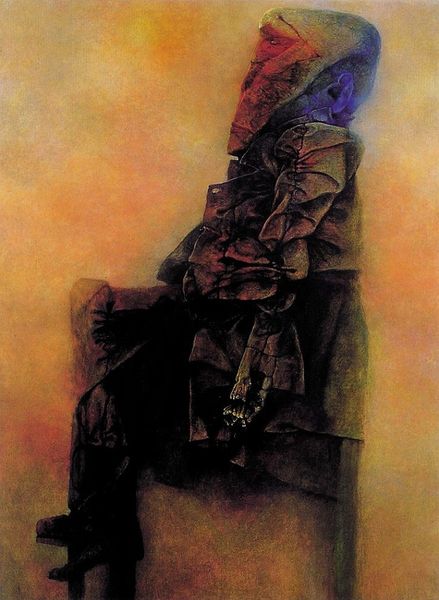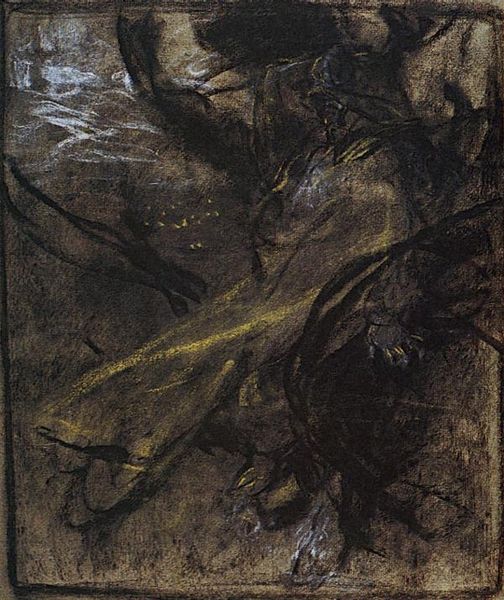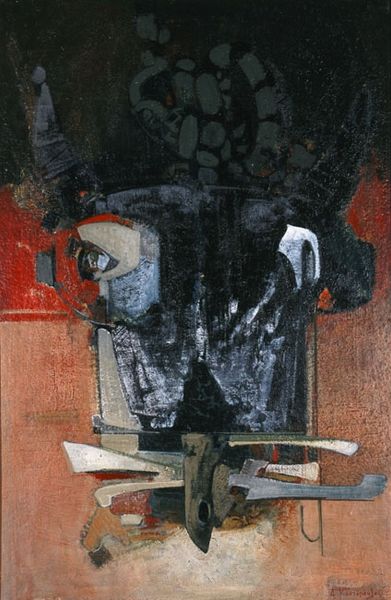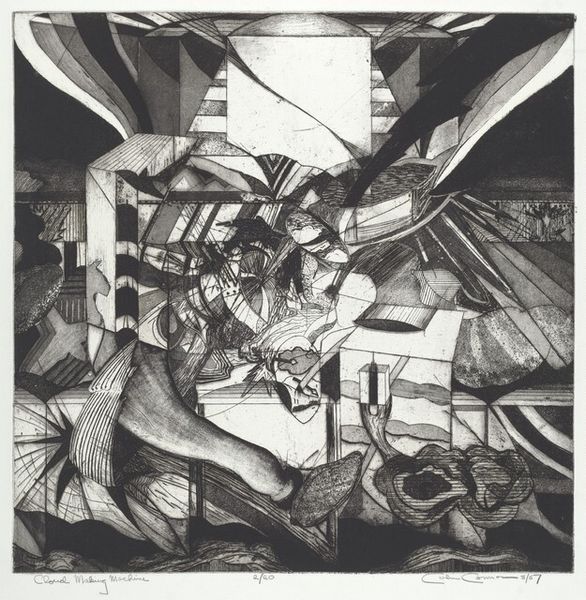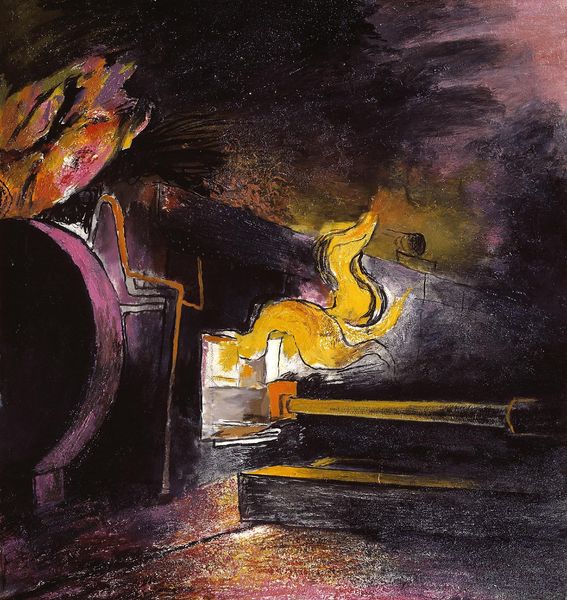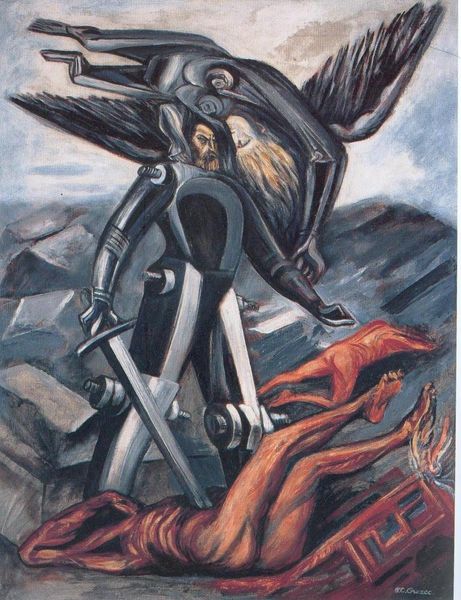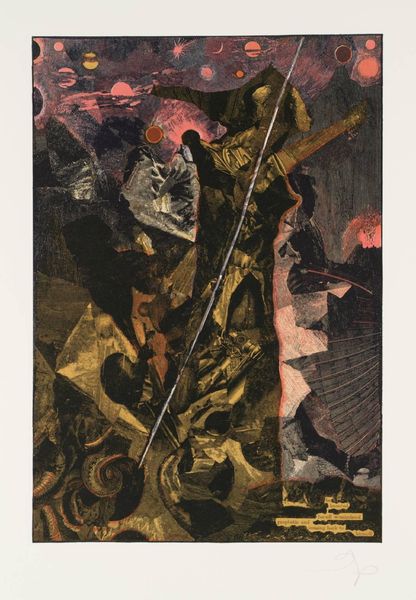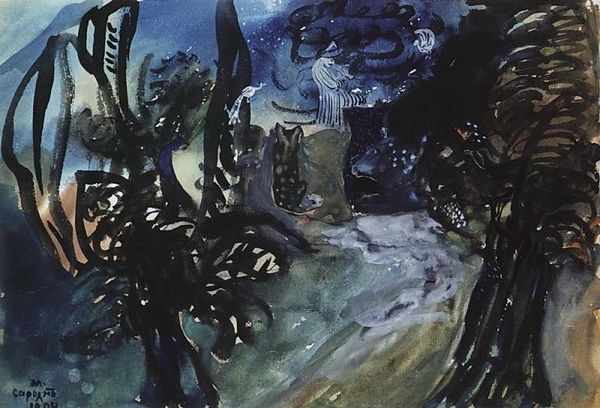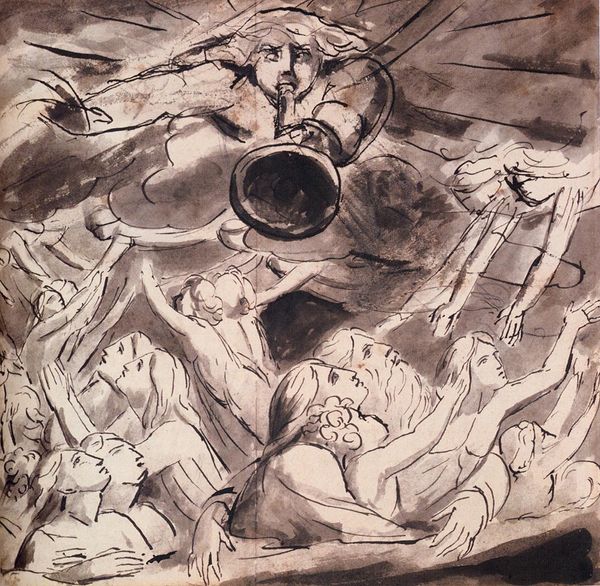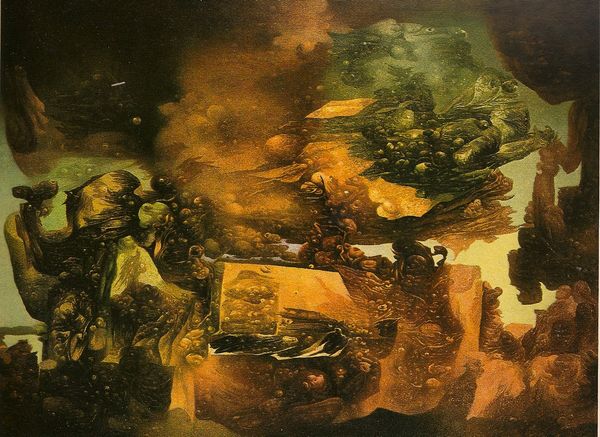
Copyright: Vela Zanetti,Fair Use
Curator: This detail, titled "Mural of Mina," originates from Vela Zanetti’s 1965 fresco cycle. Immediately, we confront what seems like a study in concentrated suffering. Editor: It strikes me immediately: the materiality! You can practically feel the weight of those stones and the heat from the implied flames just looking at the density of the paint application and shading. Curator: Precisely. The somber tonality—almost a monochromatic scale anchored by browns, blacks, and the sickly greens in the flesh—pushes forward an expressively distorted figure with monumental impact. Editor: Think about what a fresco demands, though! Each segment must be completed while the plaster is wet, it's real, physical work. Zanetti wrestled not only with paint but also with time, light, and climate conditions to deliver his somber message. The texture and sheer scale reinforce the artist's focus on a specific socio-political narrative, wouldn't you say? Curator: Of course, though it seems almost too simple to distill this profound image into merely illustrating political history, it speaks to the deeper archetypal structure of sacrifice and labour as human experience. The hand gestures alone become emblematic of endurance, even despair. Notice their sculptural weight; it anchors the composition, acting almost as a stage. Editor: And speaking of composition, observe the dynamic contrast: coarse materiality juxtaposed with implied fragility through those hands and arms; what you interpret as "sculptural" I would argue demonstrates intentional contrast using materials, the very tangible labor is on display within the representation of labor and toil depicted in paint. This is so intentional; a discourse about the working body. Curator: The raw emotional intensity and focus on shape—note the use of hands as focal point. Zanetti seems less focused on social commentary than the existential impact that informs our comprehension. Still, how that very expression originates from labor transforms the formal characteristics of Zanetti’s craft; he turns his labor into our consideration of working bodies throughout history, just like his fresco turned plaster to art. Editor: Absolutely. It’s a convergence where artistic vision confronts the real grit of the working world, leaving us pondering how those elements coalesce into what you correctly framed as sheer expression.
Comments
No comments
Be the first to comment and join the conversation on the ultimate creative platform.

